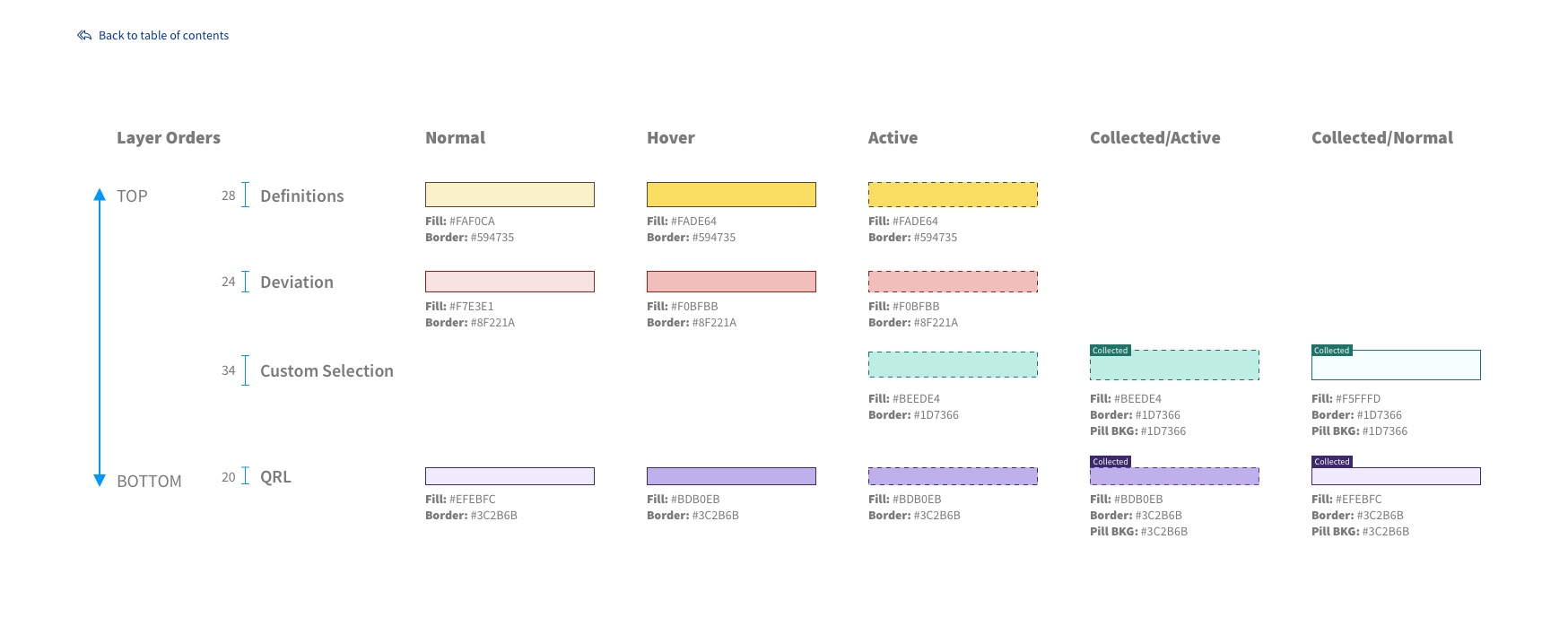Problem Statement
-
How can we develop a cutting-edge tool for lawyers engaged in daily document analysis, strategically addressing the repetitive and mundane tasks that characterize their workflows? Enhance legal professionals’ efficiency with an innovative solution designed to streamline processes and elevate productivity in document analysis.
My role: Senior UX Designer
Objectives
-
Create a tool that will analyze documents for users using AI and machine learning.
-
Analyze deviations, definitions, different parties associated to the matter, etc.
Proposed Solution
This was a 0-1 initiative within Thomson Reuters that spanned a year and a half. We utilized existing research we had and used Subject Matter Experts (SMEs) throughout the project.
Below are designs that came out of all of this work. I was unable to grab the work from the process but I was the lead designer throughout the process. I have documented my process below that I followed:
Process
- Research and Discovery:
- I defined the project scope, goals, and success criteria. I also made sure we had a group of SMEs (Subject Matter Experts) to test with throughout the process.
- Journey Mapping:
- I developed user journey maps to visualize the end-to-end experience. Highlighting pain points and opportunities for improvement.
- Ideation and Conceptualization:
- I brainstormed design ideas and concepts. Sketched out wireframes and prototypes to visualize potential solutions. Encouraged cross-functional collaboration to gather diverse perspectives.
- Prototyping:
- I developed interactive prototypes based on the chosen concepts. I also conducted usability testing with our SMEs to gather feedback. Then, we iterated on the design based on user insights.
- Visual Design
- Development Collaboration:
- I collaborated closely with developers to ensure the feasibility of design elements. Provided design specifications and assets for implementation. I also conducted regular check-ins to address any design implementation challenges.
Matter management
Crafted for optimal functionality, I took advantage of Thomson Reuters’ acclaimed matter management system and tailored it to center around documents in this specialized tool. The core essence of the tool I designed revolves entirely around documents, making them the focal point of every action. I’ve strategically placed all the necessary actions right at your fingertips, ensuring a swift start to document analysis.
As soon as you upload a document, our tool kicks into action, analyzing it promptly to minimize any waiting time. Once the document is ready, you can effortlessly dive right in and begin your work. It’s all about a user-friendly and streamlined experience, prioritizing your efficiency in handling document-centric tasks.

Questions Panel
To ensure a comprehensive document analysis, our tool features a structured questions panel covering every category of queries a lawyer typically addresses. The system then systematically retrieves and compiles answers for each question. It’s crucial to note that, based on user research insights, lawyers consistently prefer to review and validate the generated answers, never relying solely on automated outputs.
Upon a lawyer’s meticulous review and approval, the tool marks the question as answered. This approach not only provides transparency in the review process but also enables a clear record of which lawyers addressed each question and the thoroughness of their assessments.
Split view
Through my user research, it became evident that the split view feature was essential for our tool. The true strength of Contract Analysis unfolds when we analyze two documents simultaneously. This functionality empowers lawyers to efficiently compare documents and cross-reference answers, facilitating the identification of necessary revisions.

Analyze Types/Layers
Contract Analysis does four different types of analysis in documents. They are:
- Finding answers to questions for review
- Showing definitions
- Finding deviations
- Discovering parties/ownership
Addressing a significant design challenge, I focused on enabling users to seamlessly navigate multiple layers concurrently. In collaboration with Thomson Reuters’ A11y metrics and an Accessibility (A11y) specialist, I successfully designed all four analyzing layers to be accessible simultaneously, ensuring compliance with A11y standards.

Completely Mobile Optimized
Recognizing that the optimal user experience would be on a desktop, I also prioritized providing lawyers with enhanced flexibility. After conceptualizing and designing the ideal user experience, I took the initiative to fully optimize the entire app for mobile usage. Now, users can seamlessly execute all steps on their mobile devices, ensuring accessibility and convenience on the go.
Multiple Document Analyzing
Once I honed in on the strategy of saving lawyers time through document analysis, the logical progression was to scale that efficiency. My goal was to instill confidence in lawyers by enabling them to apply the tool’s analytical prowess across a multitude of documents, exponentially saving them time. I crafted an intuitive interface allowing users to analyze multiple documents concurrently. To enhance comprehension, I integrated data visualization, providing lawyers with a deeper understanding of the analyzed information.
Knowledge Management
I crafted a dedicated section within the app to empower users in customizing the system according to their specific needs. In this section, users can educate the system by introducing new questions, providing deeper insights for existing queries, and even fashioning their own templates tailored to their preferred working style. This personalized approach ensures that the system aligns seamlessly with the unique requirements of each user, enhancing their overall experience.
Reporting
The last step I had to design after the lawyers did all this work to use the tool and analyze all their documents was a reporting function. Users can download a document that takes all the artifacts they made as a PDF or Excel document. I also designed a read-only view for users.
